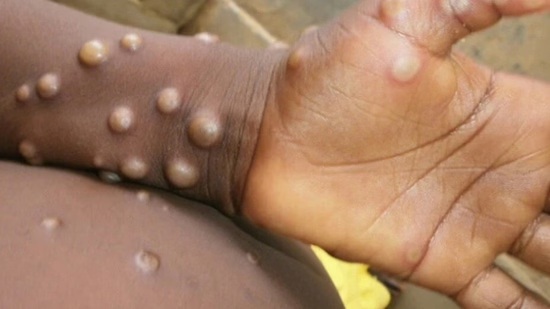Monkeypox, often referred to in news circles as “mpox,” has been generating considerable concern worldwide. Though it might sound like a name out of a fictional tale, monkeypox is a real and serious viral infection. This article will explore what monkeypox is, how it spreads, its symptoms, and the steps you can take to protect yourself.
What is Monkeypox?
Monkeypox is a viral infection related to smallpox, though it generally causes milder symptoms. Discovered in monkeys in 1958, the virus has since been identified in various animal species and can infect humans. The term “monkeypox” derives from the virus’s initial identification in primates, but the disease is not limited to monkeys. Humans can contract monkeypox through various transmission routes.
Monkeypox is a zoonotic virus, meaning it is transmitted from animals to humans. It has surfaced in different parts of the world, causing sporadic outbreaks. While it is less severe compared to its smallpox cousin, monkeypox still poses significant health risks and requires attention.
How Does Monkeypox Spread?
Monkeypox can spread through multiple channels, making it crucial to understand how the virus is transmitted:
- Direct Contact with Infected Individuals: The virus is often spread through direct contact with the bodily fluids or skin lesions of an infected person.
- Animal Contact: Handling or coming into contact with animals infected with monkeypox, particularly rodents and primates, can transmit the virus.
- Airborne Transmission: Though less common, the virus can spread through respiratory droplets when an infected person coughs or sneezes.
The primary mode of transmission involves touching the rash or fluids of an infected person. Additionally, exposure to contaminated materials like bedding or clothing can also pose a risk.
Symptoms: What to Watch For
Monkeypox symptoms typically manifest 7 to 14 days after exposure to the virus. These symptoms can initially mimic other illnesses, making early detection challenging. Key symptoms to be aware of include:
- Fever and Chills: Often the first signs, similar to other viral infections.
- Muscle Aches and Fatigue: General body aches and extreme tiredness.
- Rash: The most distinctive symptom, starting as flat spots that evolve into fluid-filled bumps. This rash usually appears on the face, arms, legs, and sometimes on the genitals.
If you develop a rash following flu-like symptoms, it’s essential to consult a healthcare provider promptly.
Diagnosis: How is Monkeypox Confirmed?
Accurate diagnosis of monkeypox involves a combination of clinical evaluation and laboratory testing:
- Swab Tests: A healthcare provider will take a sample from the rash to test for the virus.
- Blood Tests: These tests help identify the presence of the virus in the bloodstream.
Diagnosis can be complex, as monkeypox shares symptoms with other illnesses. Medical professionals rely on both physical examination and laboratory results to confirm the infection.
Treatment Options for Mpox
There is no specific cure for mpox, but treatments are available to manage symptoms and reduce discomfort:
- Supportive Care: Rest, hydration, and a balanced diet help support the body’s recovery.
- Pain Relievers: Over-the-counter medications can alleviate pain and reduce fever.
- Antiviral Medications: In severe cases, antiviral drugs may be prescribed to mitigate the illness’s severity.
Treatment focuses on relieving symptoms and preventing complications. Much like managing other viral infections, supportive care remains a cornerstone of treatment.
Prevention: How to Protect Yourself from Mpox
Preventing mpox involves several practical steps to reduce the risk of infection:
- Avoid Close Contact: If someone is infected with mpox, it is crucial to avoid direct contact with them.
- Maintain Good Hygiene: Regular handwashing and avoiding the sharing of personal items can help prevent the spread of the virus.
- Vaccination: Smallpox vaccination may offer some level of protection against mpox. Consult healthcare providers for advice on vaccination and other preventive measures.
By following these preventive measures, you can significantly reduce your risk of contracting mpox and contributing to its spread.
Read WHO’s (World Health Organisation) overview here.

